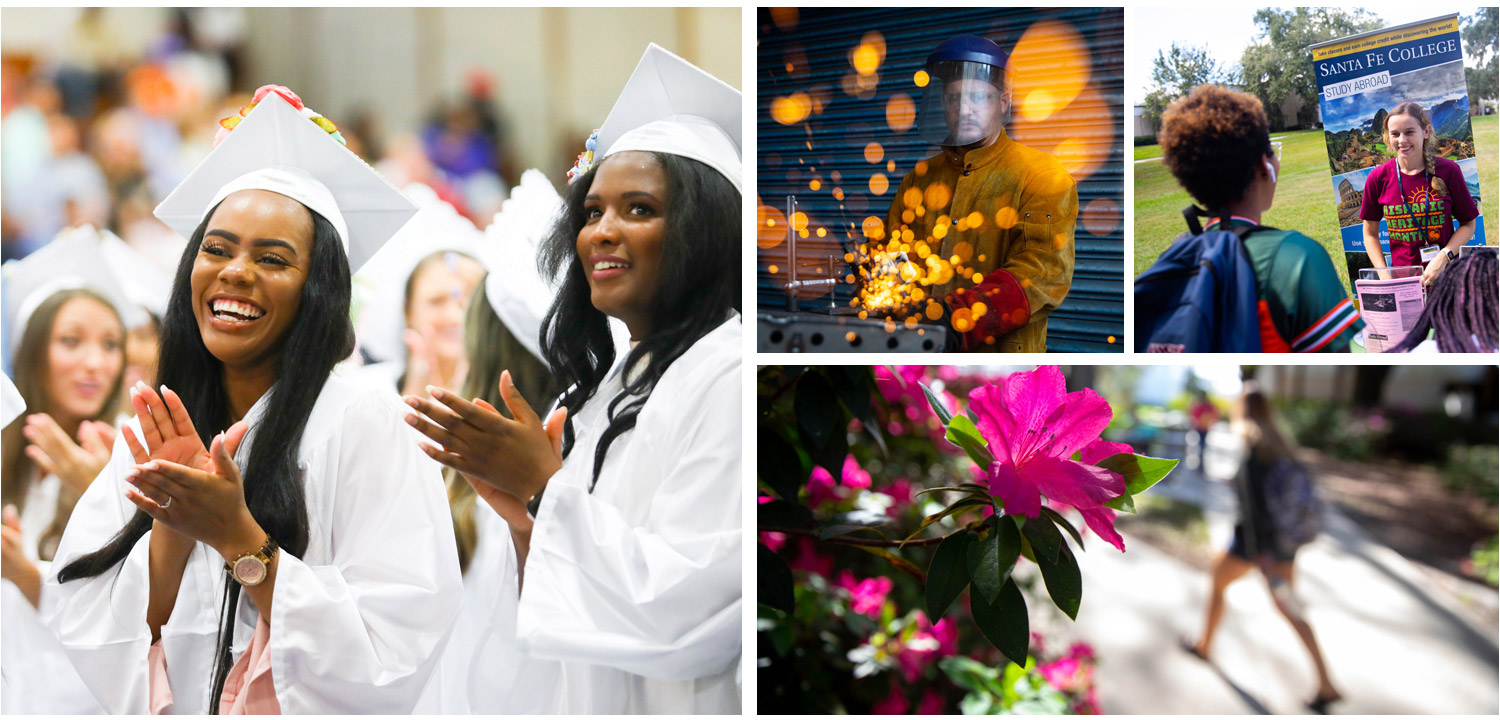Photo and Video
Overview
Photos and videos should support the SF brand, and be accurate, clear, concise and inclusive – just like our language and messaging. They should be full-color, well-lit, in-focus, lively, impactful and authentic. They should capture candid moments and often reflect our diversity and our spirit of collaboration. Ideally, photos and videos should convey the story of our institution so that it cannot be mistaken for any other. They should evoke an emotional connection to Santa Fe College, inspiring the audience to either enroll at SF or to be grateful that they did.
When taking photos or video, be mindful of subjects' hand gestures, postures and facial expressions, if they are wearing clothing with offensive messages or prominent logos and images that are trademarked. When editing photos, don't alter an image to portray something that's not accurate. Make sure you have our photo/video consent form signed for everyone who is recognizable. This releases the institution from liability when using images or video for commercial purposes.
For official electronic and print communications, professional-quality, high-resolution images and videos should be used. To view currently available options, go to the Photo Gallery page of the Toolkit section of this Brand Guide.
To request the college photographer or videographer, fill out a project request form.

Sharing photos and video online
Whether on social media or the college website, it is important to follow the rules set forth by our General Counsel related to liability, licensing and accessibility.
Accessibility
Photos and gifs should have descriptive captions that could sufficiently describe the picture to a person with low vision using screen reading software. If they are posted on the website, they must have alternate "alt" text with a short, accurate description of what's happening in the image.
Keep text layering on images to a minimum! Too much text on an image, including Facebook cover and event photos, is not only difficult to read, but can cause your post to be ignored or disregarded by algorithms. To determine if you have too much text on an image, use Facebook's Image Text Check(Opens in new window) tool.
Videos should be adequately captioned, and their subtitle (SRT) files should be uploaded with them. When embedding videos, YouTube is preferred. A representative from Marketing & Communications (MarCom) must be included on the YouTube account. See Creating Accounts on the Social Media page in the Guidelines section of this Brand Guide for details. Never set audio and video content to begin playback automatically or screen reader users will be unable to hear the output of their screen reader. Limit blinking or flashing content to three seconds.
Academic departments and programs can contact the Center for Academic Technologies & Training for questions regarding the accessibility of their instructional content. For any other questions about making photo and video content accessible online, contact the MarCom team.
Liability and Licensing
Photo releases – If you are marketing the college, make sure you have our photo/video consent form signed for everyone who is recognizable in a photo or video. This releases the institution from liability when using images or video for commercial purposes. If you are posting images or video from a "news event" on the day that it happened, it is not necessary to have consent forms, but those images cannot be used again to promote the college.
Intellectual property – Santa Fe College is an institution. It is subject to different usage restrictions than are individuals, particularly where marketing is concerned. Fair use does not apply. As such, do not post clip art, audio clips, music, images or private/stock footage that you find online (e.g. Google image search, creative commons) without first making sure you have the proper rights. In some cases, it is possible to use material if it is properly credited. For more information, contact the college marketing assistant.